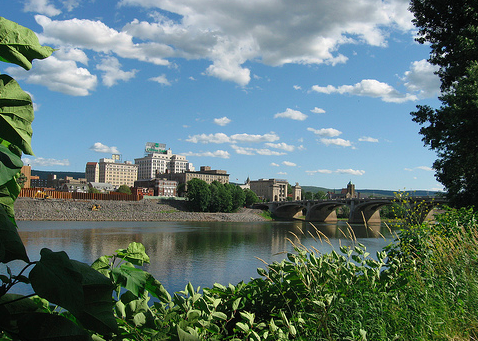To provide observations and information on the emerging fields of landscape scale conservation, heritage preservation, and sustainable community development.
Newsletter
Stay up-to-date with the latest nature, culture and community news.
We won’t spam you or share your information. Newsletters are sent approximately 10 times a year. Unsubscribe at any time.
Take Notice: Trending for Large Landscapes
Partners in Caring for Land

Looking Back at NPS Centennial Coverage
Over the past year, we’ve been examining the National Park Service in the context of its 100th anniversary. We considered whether the NPS should expand its “brand”; looked at the history of Mission 66; evaluated the idea of certain parks being “crown jewels”; and argued for a more nuanced understanding of the NPS’ recent post World War II history. We’ve also been compiling a list of key documents and reports for thinking about the future of the agency. Here are five that are worth taking a look at as the centennial winds down.
Origins and Outcomes
In researching the history of post World War II protected area management in the U.S., I’ve begun to think more and more about how the

National Heritage Areas: Learning from Thirty Years of Working to Scale
In the face of challenges such as climate change and urban sprawl not to mention shrinking budgets and at-times hostile lawmakers, how can those interested

Corporate Role in Parks Recalls Earlier Era, Presents New Challenges
This summer saw a flurry of critical articles centered on a proposed change in how the National Park Service solicits and recognizes private donations, including from corporate entities. But is the link between conservation and corporations actually new? And what does it reveal about deeper connections between economic change in the United States and the manner in which the country manages its public lands and historic sites?

Guide to the Parks – Past, Present and Future
Last summer, I taught a college course on the History of U.S. National Parks. At the time, I lamented the relative lack of high-quality, scholarly research on recent National Park history to share with my students. Fortunately for me, when I teach the class again this spring, I will now have the book I was looking for – the recently published A Thinking Person’s Guide to America’s National Parks.

Looking Back at NPS Centennial Coverage
Over the past year, we’ve been examining the National Park Service in the context of its 100th anniversary. We considered whether the NPS should expand its “brand”; looked at the history of Mission 66; evaluated the idea of certain parks being “crown jewels”; and argued for a more nuanced understanding of the NPS’ recent post World War II history. We’ve also been compiling a list of key documents and reports for thinking about the future of the agency. Here are five that are worth taking a look at as the centennial winds down.
Origins and Outcomes
In researching the history of post World War II protected area management in the U.S., I’ve begun to think more and more about how the

National Heritage Areas: Learning from Thirty Years of Working to Scale
In the face of challenges such as climate change and urban sprawl not to mention shrinking budgets and at-times hostile lawmakers, how can those interested

Corporate Role in Parks Recalls Earlier Era, Presents New Challenges
This summer saw a flurry of critical articles centered on a proposed change in how the National Park Service solicits and recognizes private donations, including from corporate entities. But is the link between conservation and corporations actually new? And what does it reveal about deeper connections between economic change in the United States and the manner in which the country manages its public lands and historic sites?

Guide to the Parks – Past, Present and Future
Last summer, I taught a college course on the History of U.S. National Parks. At the time, I lamented the relative lack of high-quality, scholarly research on recent National Park history to share with my students. Fortunately for me, when I teach the class again this spring, I will now have the book I was looking for – the recently published A Thinking Person’s Guide to America’s National Parks.


